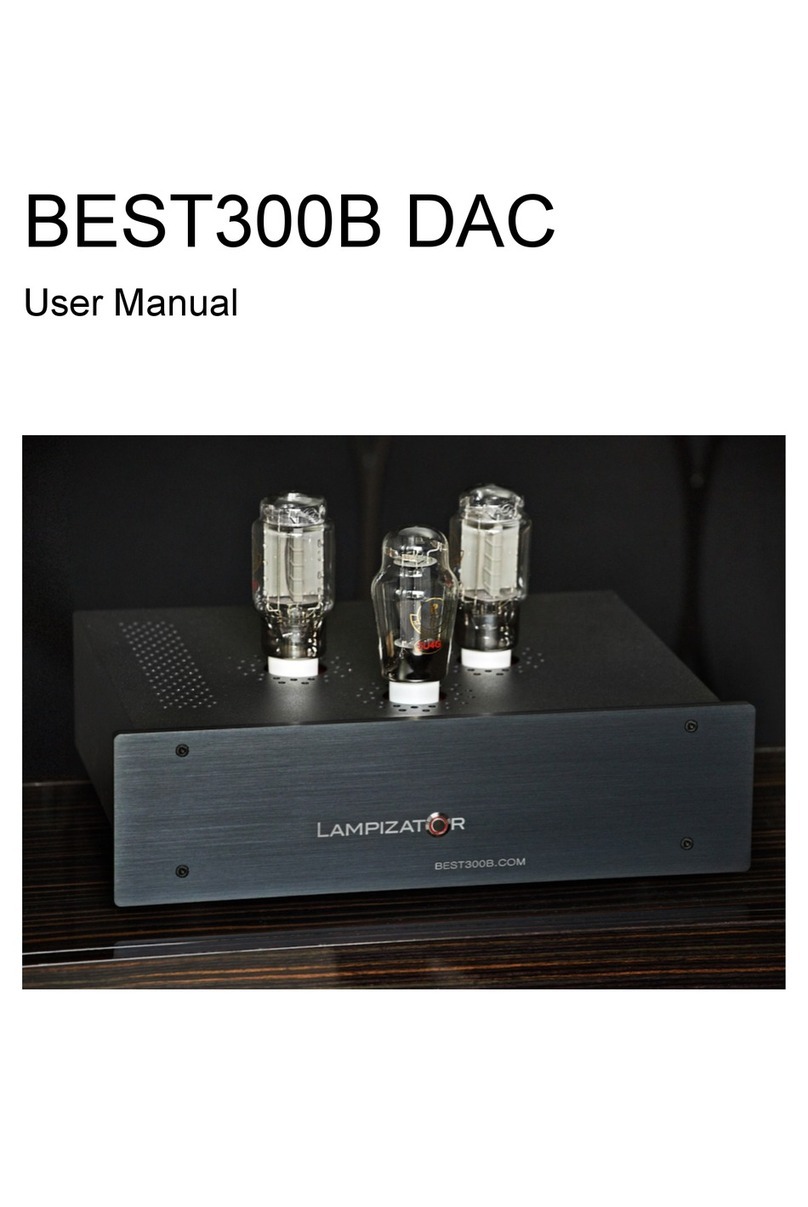Introduction
Thank you for choosing Lampizator Amber-3. We created it with huge research effort to
deliver not only world class musical performance, rivalling the most expensive DACs
money can buy, but also to offer very long life of the product. Simply speaking – if you
adhere to some basic precautions listed below – the product should last a lifetime and
hopefully in this period – will never be outperformed by a competing product.
“Whose lifetime?” one might ask – well – let’s not go into details – enough to say it
should work flawlessly for the foreseeable future.
The Amber-3 should be future-proof. Shall we ever launch a major upgrade to the
electronic or mechanical part – you can get the upgrade at very reasonable cost. Shall
you decide you need some added features – you can also get them at reasonable cost
anytime in the future - any option you initially forgot.
We can’t be 100% sure, but it is extremely unlikely that the market and the industry in
the future will embark any technology of music storage faster than 192 kHz and with
more resolution that 32 bits. We already hit the human ear limits, not to mention the
real needs of mass consumers (MP3).
Data formats
The DAC is capable of automatic recognition of all sampling rates from 32 through 44,1
to 768 kHz and bit rates from 16 to 32. Also DSD is recognised and automatically
switched, making mixed playlist possible. DSD formats 64x and 128x and 256x and
512x are switched also automatically. Since few if any transports offering SPDIF
format of the 192 kHz exist in the consumer market, it is hard to guarantee the
operation but on the professional ones which we tried – it worked. From our experience
the transmitters of SPDIF are incapable of making good square wave over 48 kHz, so if
you play a 192 kHz file, be aware that on one hand you “play” more detailed data, but
at the same time your signal is waaay more distorted so at the end of the day for this
reason alone it may not be worth it to chase the hi-rez rabbit.
If you use USB connection, all our DACs will play up to 768 kHz and 32 bits. This
theoretical limit does not imply that you need RECORDINGS of that resolution, which
don’t exist by the way, but that you can use up sampling to play regular files. We
however listen to all recordings at the resolution settings they were recorded.
By PCM files we mean all known file formats like: MP3, MP4, Aiff, Flac, WMA, WAV,
APE, Ogg, and many more less known types. PCM abbreviation stands for pulse code
modulation.





























